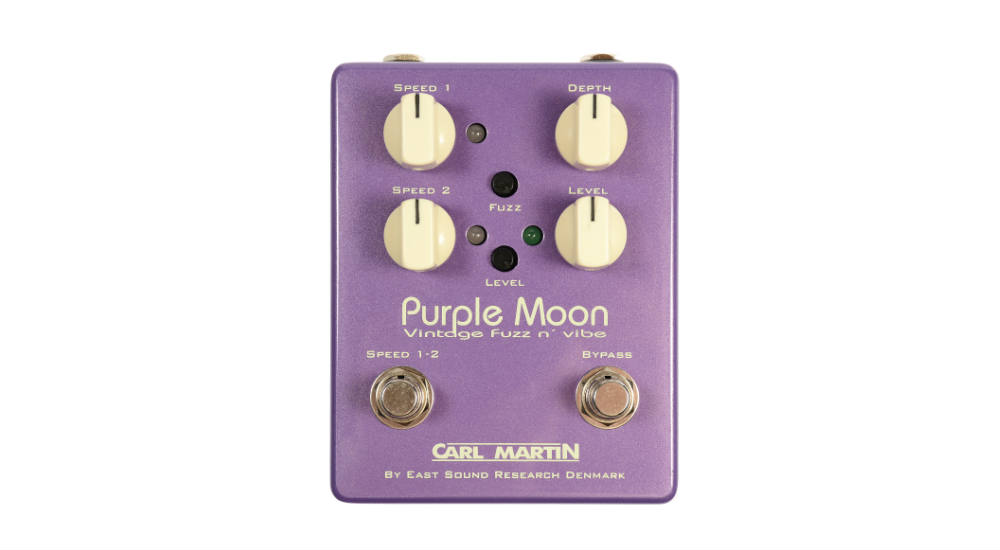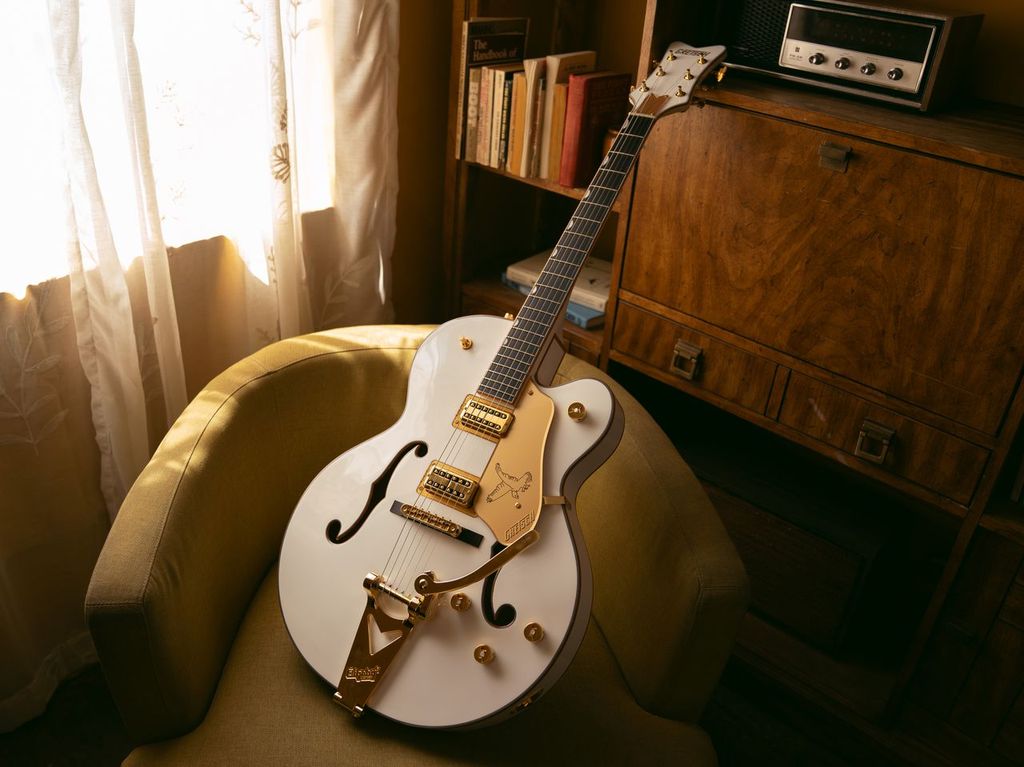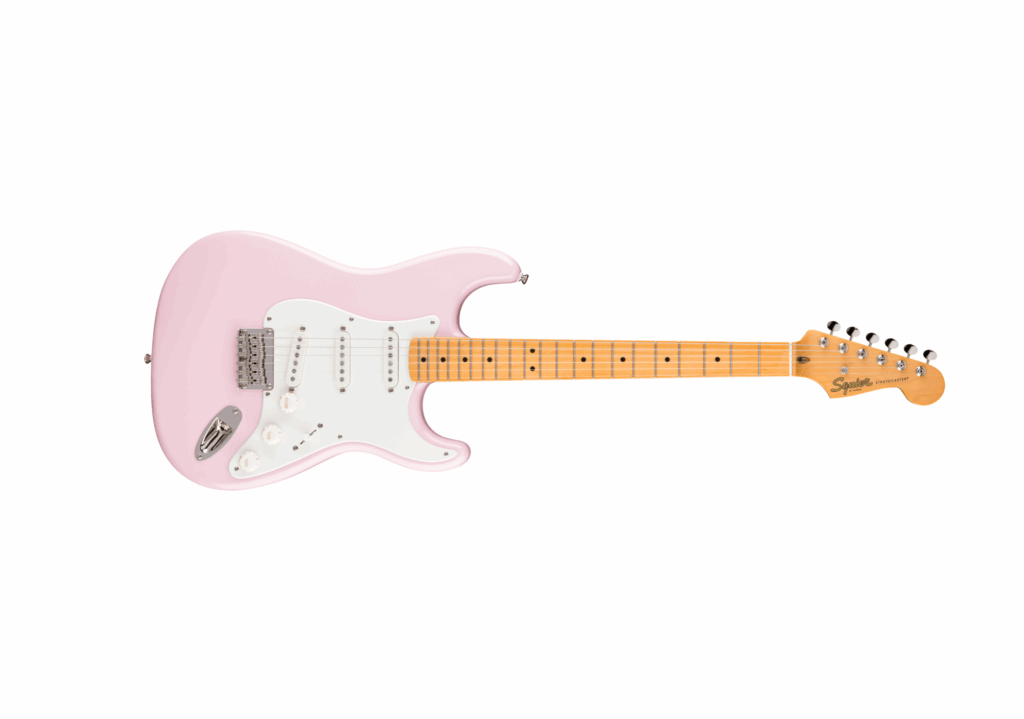One of the effects most closely associated with the ‘60s is modulation, especially the rotating, out-of-phase sound brought to life by Leslie cabinets. Apparently, East Sound Research’s main man Carl Martin came up with the idea for their newest offering – the Purple Moon – while on a binge of records from this era. Players who are fans of Hendrix, Stevie Ray Vaughn and David Gilmour, as well as the players they’ve inspired, are the target audience for this quirky combination of rich, creamy fuzz and wild, warbling optical vibrato.
The interesting thing about this circuit is that the two effects are actually knitted together. You can dial out one or the other using combinations of the two level knobs, but where one leads the other will follow. This means that once the bypass is disengaged, you’d better be ready for it to take you where you need to go. On its own the fuzz is as classic as fuzzes come. Dial it in from barely there to interstellar overdrive with the top of the two mini dials, rein it in with the other, and you have your hands on the wheel of a lush and dynamic ride replete with wooly seat covers. The vibrato, on the other hand, is derivative of the optical waveforms of a Fender Vibrolux, but with the addition of dual speed controls. Swerve between late night, slowed down swells to pulsating twitches at the click of a heavy-duty switch, and use the depth and level knobs to zero in on that root chakra sweet spot. It has more versatility than a dream-catcher has beads. On a whim I ran an organ sound through it with the fuzz at about 5 percent and had a great time pretending I knew one-tenth of the magic in Nick Wright’s fingers.
One of the things that modulation pedals like these often suffer from is an unworkable amount of volume drop when the vibrato is active. Martin’s Purple Moon design has this covered with the combination of depth (the amount of signal in the effect) and level (the amount of effect in the signal), which not only allows artifacts of your guitar’s natural voicing to shine through, but doubly serves to season it with a pinch of shimmery high, which I found really pleasing to play to. The fact that the ebbs and flows are so intrinsically tied to the fuzz itself is another success, as you’ll find harmonics latching onto random notes here and there, adding some wild accents that no amount of careful planning could replicate.
It may come around even less often than its blue brother, but the Purple Moon is definitely one to bask under if you get the chance.







